*Since I do not currently have with me or own some systems mentioned in this article I have used images from wiki commons. these images are used under public domain or by permission under license agreement*
The Nintendo Entertainment System or NES is one of the most beloved classic gaming machines in the USA. There are already a slew of fan sites on the web describing its attributes and reviewing its massive game catalog. In my opinion It is also one of the easiest systems to modify for a beginner. Its durable construction and simple design aid in this respect. It is usually extremely simple to repair and maintain. The NES also tends to pop up time to time at outrageous prices mostly due to nostalgia or a market fueled by the idea of “OMG its old so it must be worth its weight in gold” but remember, literally millions of these machines were made and due to there simple design many are still working just fine. With this guide I intend to help those looking to claim a NES system by finding one for a reasonable price as well as restore and if so desired modify their NES to maximize enjoyment.
THE VARIOUS MODELS
First I want to briefly go over the various models available of the NES in Japan and the US. The European NES is cosmetically and functionally the same as the US model but is designed to work on the PAL video standard and really an American has no benefit from importing an EU model. I also want to point out to anyone that’s read my article on Choosing the right TV for classic gaming in the US That the NES is one of the few systems that DOES NOT (with a few rare exceptions) output RGB but I’ll get into that detail more at the mod section. I’m just going to go over the models very briefly so I recommend doing more research if any particular model catches your eye.
THE JAPANESE MODELS
Many Japanese units are superior in design to their US counterpart. There were also many games released in Japan and not the US. Also of note the Japanese NES has extra sound channels meaning more sound effects, this sound channel was left disconnected on all US models. Many JP games also have features or effects that were left out of their American releases. Japanese games can be played on US systems and vise versa via cheap converters.
This is the Japanese NES known as the Famicom or Family Computer. Japanese NES games are much smaller then their US counterparts and the machine also loads from the top. That big red box under the Famicom is the Famicom Disk Drive, an add on disk drive. some NES/Fami games were only released in this format. The disk system was never released in the US and the disk system is incompatible with the US NES.
This is the Twin Famicom made under license by Sharp. Its basically just a Famicom and disk system combined.
This is a really weird one. The Famicom Titler. Basically one day some exec in Japan said “hey I know! lets combine that popular video game machine with a machine that adds subtitles to VHS movies!” And that’s what it is, a Famicom combined with a Titleling machine used to add subtitles to movies. One very notable thing to point out about this unit is that it actually has an S-video out and internally outputs RGB. No other NES of any region does this without massive modification making this a very sought after and usually pricey system.
The A/V Famicom is really the “to have” import NES. It resembles the US NES 2 but is far better. This unit is top loading but unlike its US counterpart has composite video out as well as being compatible with the Famicom Disk System.
THE US SYSTEMS
There were two NES models released in the US. The first model everyone is familiar with but a later model the NES 2 was released late in the NES’s life and has both good and bad attributes.
This is the US NES 2 released in 1993. Its much smaller then the regular NES. It is also top loading making it very reliable compared to the slot loading NES. A few negative issues though are the lack of a power LED, No composite out (without modification) and the hump makes the unit incompatible with importing a Famicom Disk System. The NES 2 did come with “dog bone” controllers which most feel are a lot more comfortable then the stock controllers. Of course you can use either controller with either system.
CLONES
I’ll also take a minute to address the clone systems. They are basically “rip-off” systems that for the most part emulate the NES. Some are very well made and cosmetically appealing like the Generation Nex and the Retro Duo but most also use a “NES on a chip” which emulates the NES. Some games and peripherals will not work on these systems, especially games that may use special chips like Castlvania III. Personally I would stay away.
So now with that out of the way we will focus on the NES most of us know and grew up with, the NES-001. DISCLAIMER *I am not responsible if you mess up your own system doing anything described here. Perform any cleaning, repairing or modding at your own risk*
FINDING AN NES AND NOT OVERPAYING
Despite what eBay and other sources may lead you to believe the NES is neither rare or expensive and if you have a little patience and know where to look you can snag one for next to nothing. Many times resellers will attempt to sell NES units at outrageous prices claiming there rare vintage machines. Let me help enlighten you. From what research I did it appears Nintendo sold 34 million units in the US. Think about that number for a minute….that’s A LOT. Take into account the system is fairly durable and you can bet a lot of those 34 million units are still out there. Even if half were to be gone that’s still 17 million machines. In short regardless of what anyone may tell you the NES is NOT rare.
The trick then is where to look. eBay is probably a bad choice though sometimes you can snag a rare deal. Craigslist I’ve found is even worse at times with people asking absolutely ludicrous amounts of money. Quickly checking my local Craigslist I came up with three adds selling NES systems. the first one is a loose system for $85, way more then anyone should pay even for one in perfect shape but not insane, $225 for a complete boxed system, insane……and a somewhat but still not reasonable $50 for a loose system with no power supply. In my opinion you should never pay more then $30 for a good condition loose console with power supply and controller. I mean even the rare import Twin Famicom and Famicom Titler only go for between $300 and $500 give or take a hundred. If I can import a kinda uncommon Turbo version of a Twin Famicom complete in the box for about $300 (and I did) I sure as hell am not paying that amount for a boxed common US system.
If your lucky enough to have a classic video game store in your area you can always try there. I have several where I currently live and it seems the price for an NES at these places is around the $60 mark. In my opinion that’s still a little much but at least you usually have the benefit at these places to knowing the system is in good working condition and can return it if its busted. usually if its a half decent shop the pin connector has been replaced with a new one.
So with eBay and Craigslist as poor options where do you look? local Thrift stores, Goodwill’s and yard sales are a decent option but can be a real crap shoot. The yard sales are really the best bets as flea markets are usually full of resellers. Goodwill’s prices vary by store and you need to be their at the right times. I was very lucky and happened to be at a Goodwill when the NES I used for this article was brought out from the back room. I paid $12 for mine and that’s including the controller, light gun, power unit and RF box. The best option I think for quickly getting a NES at reasonable prices are online Video game forums such as The Digital Press or the Neo Geo Forums. These forums are full of Video game enthusiasts and collectors that know the actual value of the units and usually have NES’s and are willing to sale them at reasonable prices.
Do not be discouraged if you cant find one right away, they are out there and please try to not overpay as they really are not worth more then about $30 in my opinion. As i said I found one at Goodwill for $12. I also frequently saw them at a local flea market loose for $20 and also at that same flea market picked up a complete boxed NES for $30. Ask friends and relatives who may have one sitting in the closet collecting dust and maybe you will get one for free, I have. The later NES 2 does go for a higher price due to its slight rarity and top loading function. Expect to pay $50 to $80 as a reasonable price for a loose NES 2 unit.
WHAT YOU SHOULD GET ALONG WITH YOUR NEW NES
They’re a few things you want to look for that should come with your NES in order to use and connect it to your TV. The first is the AC adapter.
The AC adapter is on the right and is what you use to plug your NES in, I know ridiculously basic and hardly worth mentioning but an important piece of your system none the less. The official power brick is 9V AC 1 amp. If you don’t have an original NES AC adapter a Genesis AC adapter should work okay. An SNES AC adapter is not recommended as the ma are a bit low for the NES, it may work but perhaps not for to long and you may get all kind of weird issues from lack of proper voltage.
The grey box on the right is an RF module that seems to almost always come with an NES when I find one. That’s how myself and most people I knew hooked their NES up back in the day because we didn’t know any better or gamed on an ancient TV. The NES is capable of composite so use that for a better picture.
The next essential thing we need to enjoy our NES is a controller.
Most NES systems your going to find will come with at least one but probably two original style controller (on right in above image). If your lucky you’ll also come across an NES advantage controller (on left). These arn’t rare by any means but make a nice addition to an NES set up. The NES advantage is more like an old school joystick and it great for the more arcade like games. It also has a built in turbo feature as well as slow down feature.
The original box controllers generally work great and hold a lot of nostalgia value for most people but I do tend to prefer the “dog bone” style controller that came with the later NES revision. Its just a more comfortable controller to use overall. Unfortunately they can be a little hard to find “in the wild” and official ones can be pricy for just a controller.
Personally I use this replica controller manufactured by Tomee. It claims to be a 1:1 replica of the official controller and although it feels a little light and “cheap” I’ve been using one for awhile now and it works very well. The buttons feel solid and responsive which is an issue I’ve had with some other replica controllers. They’re also cheap at under $10 and available at many local retro game stores.
RESTORING YOUR NES
So you finally got a hold of your shiny (or not so shiny) NES unit for hopefully a reasonable price and you cant wait to hook it up but you notice cosmetically its not in the greatest shape. It’s dirty, smells and the plastic is faded and yellowed from smokers or sun exposure and little Casey has drawn all over the case with his sharpie. Don’t worry as we can have that NES looking like it practically rolled off the assembly line in…well not no time but not to long.
The NES were going to use here for the example is a unit I lucked into as it was being carted out from the back room at a Goodwill. I bought it for $12. The guy bringing it out was even awesome enough to go back and price the games for me and give me first crack at them. The unit had no apparent cracks in the case but was obviously used and slightly faded.
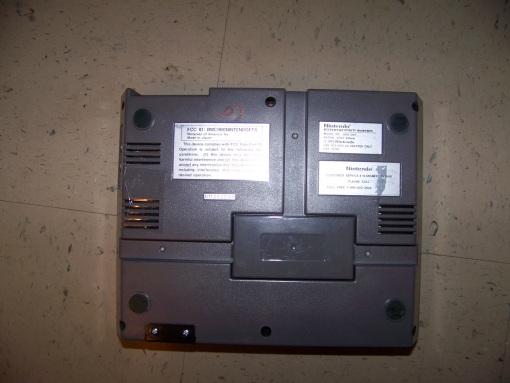 Here’s the bottom view and as you can see some red marker as well as tape residue. The tape can be easily peeled off. First thing you do want to do if your restoring your unit is separate the top and bottom. You can do this by unscrewing them via the 6 screws on the bottom. A normal Phillips head will work fine.
Here’s the bottom view and as you can see some red marker as well as tape residue. The tape can be easily peeled off. First thing you do want to do if your restoring your unit is separate the top and bottom. You can do this by unscrewing them via the 6 screws on the bottom. A normal Phillips head will work fine.
Here is the top half of my NES. As you can see its pretty scratched up. The top half should come off easily after the screws are removed and its completely plastic so the first thing you want to do is give it a good cleaning with water and soap. As for the bottom of the board mine wasn’t to dirty so I didn’t go through the trouble of removing the motherboard completely from the shell to wash it. It is also a darker color plastic that seems more resilient to fading or tar.
The tape residue was easy enough to peel off. The trick for getting rid of stubborn marks on your unit or in this case magic marker is any kind of cleaning pad. Nothing to coarse though. I used Mr. Clean magic erasure here and it worked perfectly at removing marker and stains without damaging the plastic or leaving hideous scratches. So now your case is clean of dirt and marker but The top plastic is still yellowed from time and tar. Many systems from the time used ABS plastic. ABS helped retard the plastic from fire but had the side effect of turning a gross kind of yellow or tared color over time. Fortuitously some smart people came up with a concoction called Retrobright that you can make yourself that reverses the yellowing effect!
Retrobright requires a few cheap and easy to obtain materials. The two main ingredients are Hydrogen Peroxide available at any pharmacy for $1 and Oxy which can be found in a variety of cleaners. Here I used Awesome Oxygen cleaner. Some recipes call for Glycerine as well. I forgot it here and my Retrobright still worked but in the future I intend to add glycerine as well (also found cheap at any pharmacy). Here is an official page for the compound Retrobright. You also want to use common corn starch as a thickening agent. All together the materials cost $5-$10 and this works on any ABS plastic (good bye horribly yellowed SNES systems). Note the Hydrogen Peroxide though. I used the common 3% solution but ideally you want a 10%-15% concentration. Peroxide in these levels is a little harder to find and costs more. They can commonly be found as a hair bleaching component and you may need to ask around at beauty saloons. Also note that Peroxide at that high a level is hazardous so gloves and goggles may be a good idea.
I didn’t strictly use a measured amount of peroxide but I did use a few cups since it was a lower concentration followed by about 2 spoon fulls of corn starch. after this I put the concoction in the microwave and heated for 10 to 30 seconds or until it reached a gel texture. After it reached a gel state I added the Oxy.
After adding the Oxy it should start to fizzle and bubble at this point as well as give off heat from the chemical reaction. This is when I applied the gel to the plastic top half of my yellowed NES. I used a small paint brush for this task. You really want to paint it on and get a good coat on every part. At this point you want to expose the gel covered plastic to UV light. If you live in a sun deprived area a UV light should work fine but for me the blazing Arizona desert sun does the job nicely.
Here we have the coated unit sitting outside. I used tin foil to help reflect more light back onto the unit and get at areas that were not receiving direct sunlight. After awhile the coating will dry and can be washed off. Usually this requires several reapplications to significantly reduce yellowing and return the plastic to its normal color. The weaker the Hydrogen Peroxide concentration the more reapplications it will take. I did a good 6 or 7 applications and my unit wasn’t even badly yellowed.
So here is my unit all cleaned up (except for that speck I missed on the right in that crevice). But seriously, In person it looks practically new and much better then the state I bought it in.
Okay, So you finally have your NES looking near new and your gushing with nostalgia. You plug it in and hook it up to your TV (hopefully via composite to an SDTV, read ), insert your favorite game cartrige close the lid and hit the power button and…….flashing grey or blue screen and a blinking power LED. You pull out the cart, blow in it, reinsert it and…same issue.
DON’T PANIC!!!
This is a made up statistic but I would estimate that about 90% of NES’s can be fixed for $0 to $10. I’ve never came across an NES where the reason it wasn’t working was not a bad pin connector. Maybe I’m just really lucky but to me it seems the bulk of the time an NES will power on but not play any games is the Pin connector. The problem stems from a design flaw with the front loader NES. In most models the game cartridges load from the top so there is no issue but on the US NES-001 front loader system the game cartridges load from the front and are then pressed down to make contact with the pins. Over time these Pins bend and get dirty creating a bad connection and thus the blinking power light. Fortunitly this problem is easily and cheaply fixed. My NES from Goodwill had this very problem in a very bad way.
Once you have the top cover removed from your NES this is what you should be looking at. The metal covering is the RF shielding to prevent RF interference. There’s really not a lot of delicate parts inside an NES so don’t be scared of breaking things. Another thing is there are a lot of screws. I really need not point them out as most are obvious but working inside an NES your going to be doing a lot of screwing (hold your snickers) and unscrewing. All the screws use a regular Phillips Head driver so no worries. Once you remove the metal RF shielding there is a black spring thing that the game carts go into. Unscrew it and pull it gently toward you and up till it slides out.
Now you should see this. The green board is the main part of the NES. All the chips are on its opposite side. The black plastic thing to the top of the board is the pin connector and also our problem. Its gripping a pin connector on the motherboard. Simply unscrew it and pull it off the board. You may need to apply some light force. At this point you can either spend some money on a new pin adapter or try and repair the old one. Sometimes it can be fixed with a simple cleaning. I usually try to clean all the metal connectors on the motherboard and the adapter with a cotton swab and rubbing alcohol. Let everything dry before attempting to reassemble and test. Another method is boiling the adapter in water and adding dish washing liquid. Ive had fairly good results. You can also use a safety pin to careful bend the pins on the adapter back up but I’ve had terrible luck with doing this. Sometimes despite all the cleaning The old connector just will no longer give a suitable connection. This is when you need to find a new connector. Again luck is with us since they are both fairly cheap and easily available. In this situation I do turn to eBay where they can be easily found new for about $7 – $10. Sometimes you can even get a deal on multiple connectors/adapters…whatever you want to call the thing. This is what I had to do with mine after attempts to repair the connector failed.
After a short wait my new connector arrived in the mail. I installed it and low and behold my NES not only looked but operated like new. The only problem I have sometimes with the new connectors is they need to be “broken in” and can be very tight at first and for some time afterwards. This makes it a little hard to insert and especially remove carts and sometimes it takes a good pull to remove a game cart.
MODIFYING YOUR NES
So at this point you have a nice looking fully working NES that hopefully you paid little to or nothing for. Now you need to ask yourself the question if your willing to go a little further and modify your system. Mods can be done for several reasons such as increasing playability, expanding available games library by eliminating region lock out or simple cosmetic mods like a new color power LED. In my opinion the NES is a good system to start modding on. The mods themselves add a lot to the experience and are relatively easy to perform. You could also send out your NES to a more seasoned console modder who could do the mods themselves for a price but if you think you have the skills and want to keep costs down as well as eliminate the shipping and waiting period you will need a few items.
The most important things you will need is solder and a solder gun. I also have a solder removing thing…the thing with the bulb on it. A scalpel, wire cutters/strippers. wire is also needed. I am no professional modifier nor did I invent these systems mods but I found the modification simple enough for the most part and those with little experience should not have much trouble. Before doing any mods its surely helpful to look up soldering techniques and perhaps watch some how to solder videos on YouTube. Practicing on any junk electronic boards before doing any real soldering work would also be helpful.
LED COLOR CHANGE/REPLACEMENT MOD
The first modification/repair you may want to try is either replacing a dead/dim LED or replacing the LED with a different color. I for one am sick of Red power LED’s so I decided to replace my NES’s LED with a nice bright blue one. The specs for my LED and for that matter any LED you want to use to replace even if its red are 5mm, 3.7 volt – 20mA – 2600mcd. You can use an LED with a lower mcd number if you prefer a dimmer light but I like mine nice and vibrant. I got my blue version at Radio Shack for a highway robbery price of about $5 but I’m sure a bulk amount of them can be found on eBay for $1 shipped from Hong Kong. I though decided to pay a premium to avoid the wait. The LED can be found next to the power and reset buttons in the lower left corner of the case.
Unscrewing those two screws on the right and left frees the section from the case and allows you to get to the underside where the solder points are. What you want to do in unsolder the two points on the back where the LED is then gently pull the led out of the LED holder. Once this is done its only a matter of replacing the LED you just removed with the new one and soldering the new LED in. Keep in mind LED’s can be inserted incorrectly and they have a – and + leg called Anode and Cathode. Make sure to look this up if needed and take note on how the original LED was inserted.
The LED mod is really as simple as that and if you have a good hand and patience its pretty hard to screw up. The next mod is completely optional and depend on if you own or intend to own and NES Powerpak.
NES POWERPAK FAMICOM SOUND MOD
As I mentioned earlier the Japanese versions of the NES has extra sound channels and several games took advantage of this in either enhanced music via special added chips or extra sound effects. The extra channels were left disconnected from US NES systems. The problem happened when Nintendo changed the pins from 60 in the Famicom to 72 on the US NES. How the information traveled between the game cart and the NES was changed and rerouted and in that process those in the US and EU lost the extra sound channels. Now there is a slightly complicated way to reinstate those channels in general I find the easiest way is with a simple mod and by using the super useful NES flash cart the Powerpack. The Powerpack allows you to load ROMs onto a flash cart then play them on an actual NES. This saves wear and tear on your actual games. Please note this mod only reinstates the extra Famicom sounds when playing games that support the extra sounds through the NES Powerpack.
At this point you may want to completely remove the motherboard from the NES case. after unscrewing everything gently disconnect the three cable bundles from the board.
Here’s the board removed
And here’s the case without the board.
Ok, now keep the motherboard face down.
The circled part is are the solder points to the expansion board and also the points we need to look at for this simple mod. All you need is a 47k resistor available in a pack at Radio shack for a few dollars. Then all you need to do it trim the legs down and then solder the resister to pins 3 and 9 on the above circled expansion port points.
And that’s seriously It. With that quick mod you just enabled the extra sound channels on Famicom games that support it when using the Powerpak. This does not interfear with other games that do not use the sound channels at all so you cant harm your compatibility by performing this modification. One notable game that uses the extra sound is Castlvania III which most believe to have far superior music in its Famicom version. Interestingly The US version of Castlvania III does not function on the Powerpak at the time of this writing but the largely regarded as superior Japanese version does work. One thing to note is some sound effects are more quiet on games that support the extra sounds when using this mod but this is a minor thing.
Here’s a video of the opening and a small bit of game play from the Japanese Castlvania III on my modded NES so you can hear the extra sound.
ADDING A RESET BUTTON TO YOUR CONTROLLER
With this modification we are going to add a reset button to to the standard NES controller. This is a mildly helpful mod for certain instances in a game when you just want to reset but are to lazy to get up. It actually becomes very helpful when you have a NES Powerpak in use since saving to the Powerpack requires hitting the reset button. You also need to hit reset in order to go out of a game and back to the main menu. I can take some personal credit for fine tuning this mod. When I originally seen it done on the internet a larger 1/8 jack was used as well as no button on the controller, just a loose wire so i refined it a little. There also seems to be a wireless mod out there that allows you to reset the NES by a certain button combination. I believe this is a rather professional mod that needs an extra circuit board installed. I could be wrong but if your interested look it up. This mod though works fine and is more in the spirit of easy “do it yourself”.
First off were going to need to install the jack for our new connection. I find the most convenient spot is the front of the case nest to the controller ports. The part your going to need is a 1/4 stereo headphone jack, available online or at Radio Shack.
Looks like that. so what we want to do is drill a small hole next to the controller ports. I use a small drill then widen the hole as needed with a scaple testing now and then if the jack will fit. Once it does I secure it with a healthy application of super glue then hot glue to the sides.
It should look like this now.
Now we need to connect the solder points of the reset button with the two metal prongs of the headphone jack. I use a slightly thicker gauge of wire for this. First go back to the piece where we did the LED change. Take out the little piece that holds the LED, power and reset button, turn it over.
Here I have illustrated where the LED and reset button solder points are. In between are the solder points for the power button. I’m assuming you can hook up a second extra button for a controller power switch as well but I’ve never attempted it. Anyways you want to take your two strips of wire and solder them from the two reset points to the two looped metal prongs on the headphone jack. Give a light tug to make sure its connected securely and your all done with the NES internal part. Very simple.
It should look something like this.
Now that we have a port for the new line we need to modify an NES controller. First we need a stereo 1/4 jack about of 6ft. At the end the two lines need to be split and preferably “tinned” or covered with a little solder. I simply cut the cord off an old pair of $1 headphones. Now we need a small (preferably smallest you can find) push button with two prongs. Again these can be found at Radio Shack or online. Solder the button onto the two exposed wires.
Here is a button closeup.
Ok, now we need to modify the NES controller itself. On the back of the controller are six small Phillips head screws. Your going to need a smaller + head screwdriver to get at them like one made for eyeglasses or a jewelers screw.
Inside the NES controller is pretty cramped. Before I modify the controller I like to take the pieces apart and clean the plastic button parts.
Now we want to do two things. Make the existing hole where the wire leaves the controller a little wider to allow room for our second wire as well as make another small hole for the new button next to the existing hole. You may need to snap off any plastic legs on the controller to make room. Try to trim down the button if you can as there is not much room at all.
Mine looked something like this afterwords. So now position the new button and close up the controller. You may need to attempt this several times widening the hole and trimming the button if you can before you get a fit. If the controller is bulging sometimes this has no effect but other times it makes the control pad very had to press to get a response so keep trying until you get an acceptable fit.
And here we have our extra reset button. With a little more time you can make this look as clean and professional or half-assed as you like. Screw it all closed and now you have a modified NES controller for your modified NES. Also note this effects nothing if you decide to not plug the jack in you simply will not have a reset button but the controller will function normally as well as the NES. You can still you regular unmodified controllers as well.
DISABLING THE NES REGION LOCK-OUT
This is another simple mod that disables the lock out chip in your NES. This allows you to play NES games from any region. You still need a pin adapter for Japanese games though since they are physically different. A side effect of this mod is that you no longer get a blinking power LED when a cart isn’t making contact but instead a solid screen. I prefer this to the slightly epileptic seizure inducing blinking screen. This modification will require us to flip the motherboard and cut a pin on a chip. fortunately even if you mess this modification up (like I actually did) it still sort of succeeds.
Here is the flip side of the motherboard with all the chips. I’ve circled the three main chips will be working with for the next two mods so refer back to this picture if needed. The lockout chip that we need to be looking at now is the smallest circled chip in the lower right corner with CIC labeled above it.
Now that we have identified and located the Lockout chip all we need to do is snip pin four. Its a tight fit but usually a combination of wire cutters and a scalpel works. You can try desoldering as well. So disabling the chip is as easy as snipping the lower fourth pin from the left and either pulling it off or raising it away from the board so it does not make a connection. Preferably you would want to take a thin wire and solder the raised pin to a ground but you don’t have to and I’ve never heard of any ill effects of not doing this step. Even more preferably you would want to make a switch to be able to turn the lockout chip on/off. A switch is preferable because there are supposedly a handful of unlicensed games that actually need the lockout chip enabled to work but I have never come across any game that refused to work with the lockout chip disabled on an NES. Unfortunately for me I was planning to show you how to make this switch but the pin is very small and I was impatient at the time and the entire leg was pulled off hence disabling the lockout chip but disallowing me to perform a switch mod. It still can be considered a success though since the lose of a few most likely terrible unlicensed games is a small price to pay for enabling many many excellent Japanese and European NES games.
There is my lockout chip with the pin removed hence disabling the NES lockout. Remember pin four or forth pin from the bottom left. as the board faces you and the writing is not upside down.
NES CPU OVERCLOCK
The CPU overclock modification to the NES is both the hardest of the mods here and the one most likely to kill your NES if you screw it up. That being said I am no modding expert and I succeeded on my first attempts. First thing is you defiantly are going to want a switch for this mod in order to enable and disable the overclock. Overclocking the NES helps with areas in some games that may bog down because of a lot going on in the screen. The good think about overclocking the NES is that it does not throw off timings in games and only boosts frame smoothness. On the negative the Overclock does create extra heat and stress on the CPU as well as raise the pitch of sounds and music and for this reason its best to build in a switch so you can enable the overclock at only parts that would benefit from the speed boost. I originally got the idea for an overclock as well as described directions here.
We first need a switch for our Mod. Your going to want an SPDT or single pole double throw switch which are available at Radio Shack or online for a few dollars. These switches have three connectors on the reverse side.
Here’s a picture of my switch installation. Its not a very clean looking install and I think I just wanted to get things done at the time. If you take more time or are better at such things you can get a very clean professional looking switch install.
I used a small drill and scalpel to cut out the holes for the switches. I placed them on the lower side of the NES case. Accessible yet out of the way and not spoiling the NES classic look much. These switches usually have small holes you can use to insert holding screws. You can also use super glue and hot glue. You can also notice in the picture I have two switches installed. One was for the previous lockout chip which I bungled on by snapping the pin off so its basically useless on this system.
Now we want to decide how much we want to overclock the NES CPU. The stock speed for the NES is 1.79mhz and even a modest speed boost helps in many games. As my first time doing this mod I wanted to choose a modest overclock and decided on an overclock of 2.08mhz. If I do this modification again though I may try for 3mhz. at about 4mhz overclock the NES begins to become very unstable so I would suggest an overclock of between 2 and 3mhz. Once you have decided on the overclock speed your going to need to buy a crystal oscillator. The speed on the oscillator determines the overclock. The NES CPU divides the speed of the oscillator by 12 so this is how you determine your overclock speed. For example I needed a 25mhz crystal oscillator to get an overclock of 2.08 (25 / 12 = 2.083333333333333. basically 2.08) so for a future 3.0mhz overclock my oscillator will need to be 36mhz.
Here is said oscillator. It has four legs and I bought it off eBay for a few dollars. Look for one that mentions it can handle 5V in the description.
So now that we have our oscillator we can start. I would also recommend you use very thin and small gauge wire for this mod. Now that we have the new oscillator and wire its time we do the actual mod.
Like the lockout chip modification we are going to need to lift two different pins, one on the CPU and one on the PPU (reference image above). Unlike the lockout chip mod if you break the pins you have effectively killed your NES, unless you can somehow reattach the pin which I assume would be difficult but I don’t care to find out. TAKE YOUR TIME cutting and lifting the pins and DO NOT break them off.
It really doesn’t matter what pin you lift first but I would start with the CPU. The CPU is the large chip to the left labeled RP2A03G. The pin you want to lift is pin 29. Its the 9th pin from the right on the top of the chip as the board faces you. The second pin you want to lift is on the PPU which is the large chip in the upper right labeled RP2C02G-0. The pin you want to lift on the PPU is pin 18. It is the 3rd pin on the right on the bottom row as the board faces you. These pins are both small and very hard to get to. This is the hardest and riskiest part of the mod. Take you time here. Gently snip with a small pair of cutters and if needed saw the bottom of the pins away with a scalpel then very gently lift the legs up and away from the board. If you accomplish this congratulations as this is the most difficult part.
Now what you want to do is solder a wire on each lifted pin. Next solder the wire from the CPU to the middle prong on the switch then solder the wire from the PPU to one of the other side poles on the switch. Doesn’t particularly matter which one.
Here is a terribly blurry image of the wires soldered onto the two lifted pins.
It should look like this at this point.
Now we need to attach the oscillator. The oscillator should have four legs. Leg one is in the corner that should be marked with a small dot. The legs then go in order counter clockwise so to the right of leg one is leg two. Above leg two is leg three and to the right of three is leg four. Now you want to take the third prong on the switch and solder a wire from it to leg three on the oscillator.
Now we need to solder a wire from leg four on the oscillator to a +5v DC source. I used the voltage regulator on the NES. Make absolutely sure your connecting to the right spot or you could potentially fry everything killing the NES. There should be three solder points on the voltage regulator (the big metal square on the motherboard. If the board is facing you you want to solder the wire to the point to the far right. Here is a blurry picture as an example.
Finally you want to solder a wire from pin two to a ground point. This can be any metal part of the case such as the metal borders. Pin one on the oscillator doesn’t need to be connected to anything.
After its all done it should looks like this.
And that’s it. All that’s left is to put your NES back together and test to see if it all works. At times I have found that if you flip the OC switch during game play it can glitch the system and end your game so just be aware of that.
Here is the unit mostly reassembled. You can see I used that glob of solder at the ground for the oscillator.
I would also advise securing the oscillator down, maybe with some electrical tape.
Here is a video of the overclock in action. In some parts of Super Mario Three if there are several enemies on screen at one time it can really bog the game down but the overclock eliminates virtually all slowdown. this video starts out with the game in overclock mode but it becomes very evident when switching back to stock speed.
SYSTEM MODS I DID NOT DO
NES Stereo sound modification – I gave doing this mod a lot of thought but in the end I decided to pass on it at least for now. What it does is allow your NES to output its sound in a (sort of) simulated stereo or really split mono. The NES usually takes all its sound channels and routes then through the RF or audio out in mono. A mod can be done to effectively split these sound channels into two channels effectively giving you a sort of stereo. Ideally you want a knob to adjust the split as different games will require adjustments. Some games sound very good like this but others not so much. You also want some kind of dials to adjust the sound output. No game was ever made for the NES to take any advantage of stereo sound since the NES was never made to output audio in that matter. That being the case I decided to pass on the mod at least for the time being. If you want to try the stereo mod here’s a link to a how to guide here.
If you want a “quick and easy” fix you can always invest a few dollars and buy a simple RCA Y splitter, this though won’t give you any sort of “simulated stereo” as a modification would but it will give you duel mono output from both speakers.
NES RGB mod – The NES is one of the few systems that does not natively output an RGB video signal. Contrary to what the port says or anyone else French NES units also do NOT output RGB. This is a shame since it means the best you can get is composite, with two exceptions. First is the Famicom Titler that was mentioned earlier. This unit has a special RGB video chip and an S-video port. Since this unit does output RGB it can also be modded with component out or an RGB port. The other option to mod your existing NES requires a complicated and expensive mod. At some point Nintendo put out Playchoice 10 units which were Nintendo arcade machines that played NES games. Since arcade machines used RGB monitors Nintendo made a special RGB PPU for these arcade units. That said, doing a RGB mod to a stock NES requires tracking down said Playchoice arcade board, extracting certain RGB PPU’s then finding someone with the correct expertise to install that PPU into your NES. The results are beautiful as I’ve seen screenshots but the effort and cost involved have kept me from having the modification done.
And that’s it. I will be updating this post if i decide to perform any other modifications or go back and perform some “cleaner” mods. As i said earlier I think the NES is a great system overall and It can be very rewarding to restore and/or enhance them if you so choose.
CLEANING NES CARTS
Many times Its not the fault of a faulty NES connector for a game not working but many times its the contacts on the carts themselves. Heres a real brief guide to some simple cleaning meathods for your NES carts. Note that these also work with pretty much any cart based games from SNES to Genesis.
Here are two NES carts I happened to have close by. There may be more variations then here but this is what I’ve found. The cart on the left with three screws is a later manufactured cart and the screws require a gambit screwdriver to remove. The cart on the right with five screws is an earlier cart and these can be removed with a small flat-tip screwdriver.
Here’s what you see on opening up a cart. Not much going on inside there, more then fifty percent just wasted space. Keep in mind that the original Japanese Famicom (NES) carts were very small. I’m thinking the larger sized carts are to accommodate the front loading NES units.
Here on the left is the innards of an NES cart and just for comparison I have the inside of an SNES cart on the right. What you want to clean are the gold colored contacts on the bottom. My first cleaning method is usually just a q-tip and some rubbing alcohol. Just dip one end into the alcohol and rub the contacts firmly. if their dirty your probably going to quickly notice the grim on the q-tip. after cleaning both sides I like to give it some time to dry and perhaps use a dry q-tip to help. This seems to usually do the trick as far as cleaning but if it fails you can also use a regular pencial erasure. just firmly rub the erasure on the contacts wiping off any erasure bits afterwards. Most of the time this works for me in getting a game to play though in a few cases the contacts seem just to far gone and no amount of alcohol or erasure rubbing seem to help.
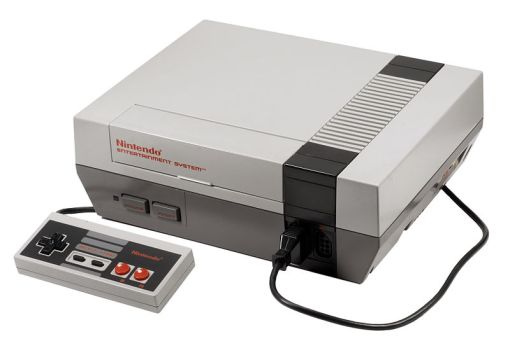



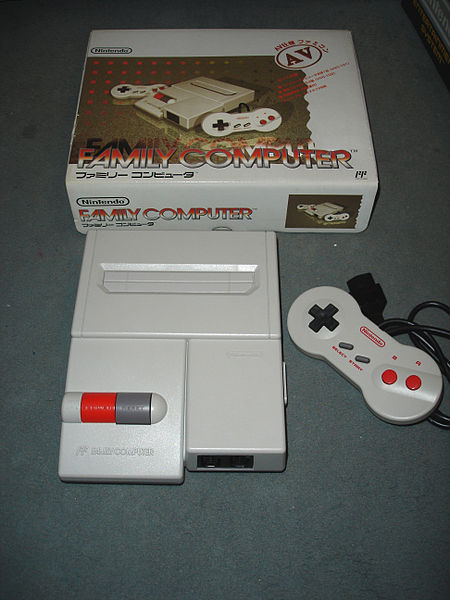
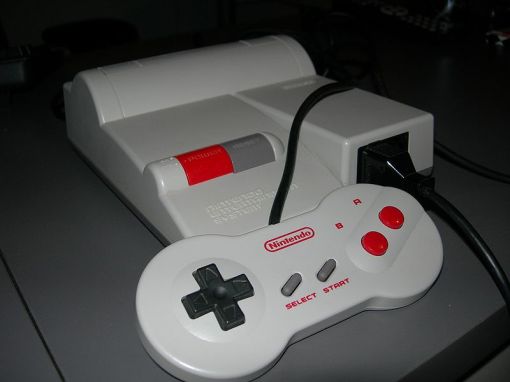
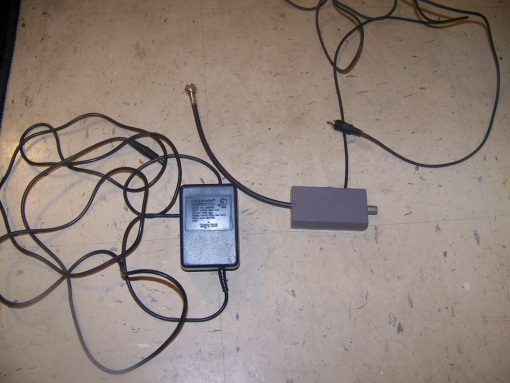


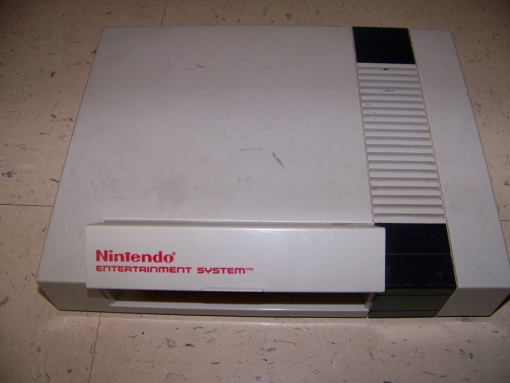

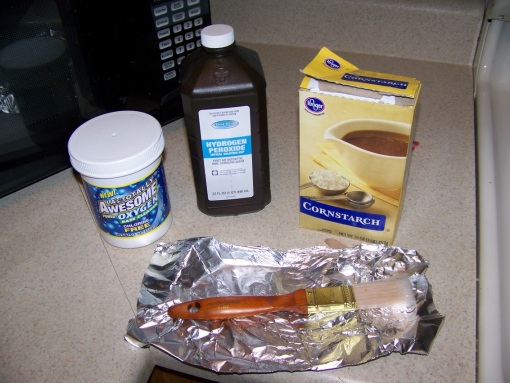
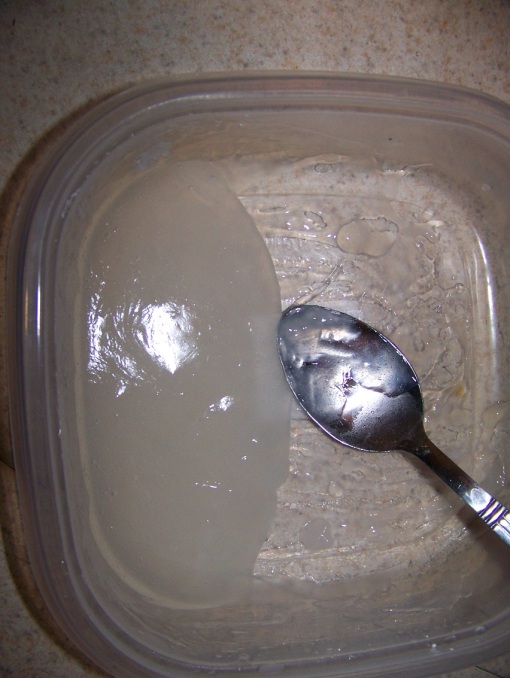
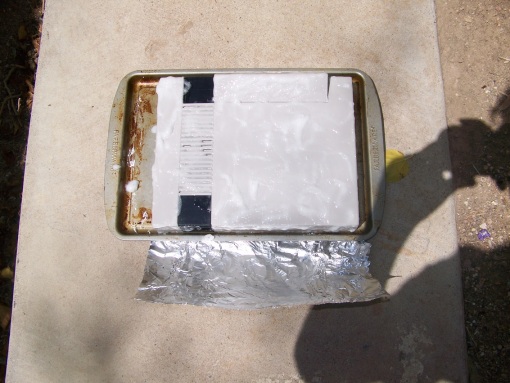


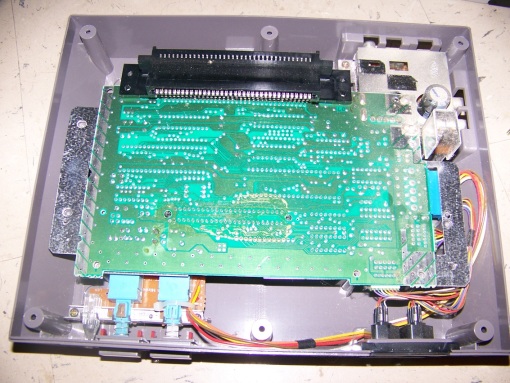
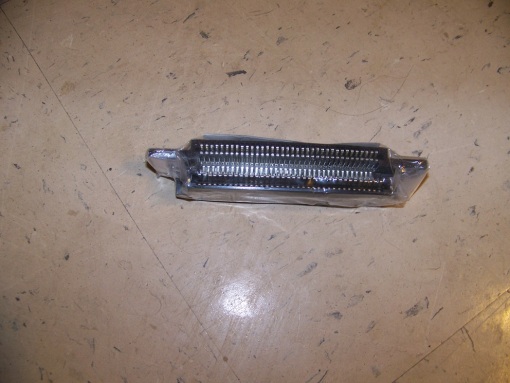

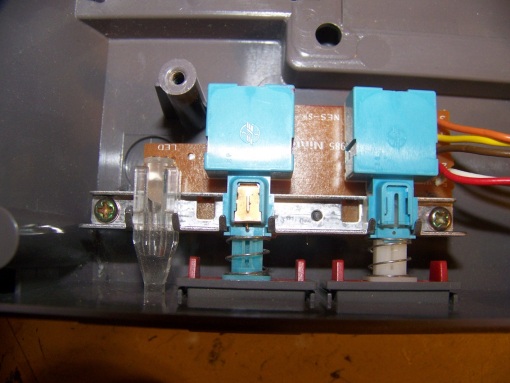




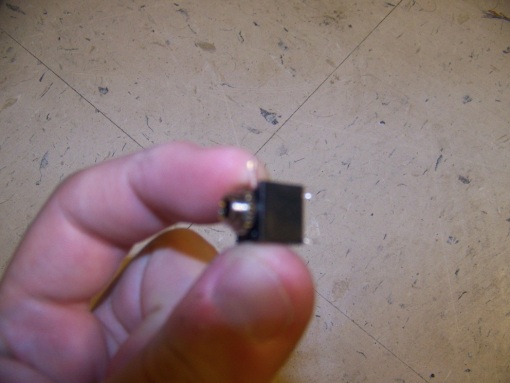
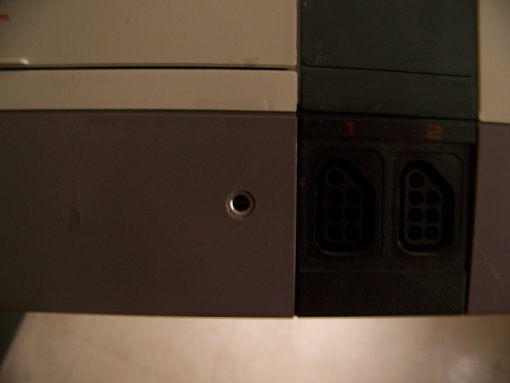
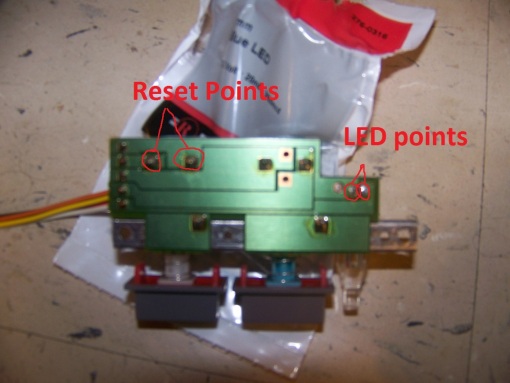
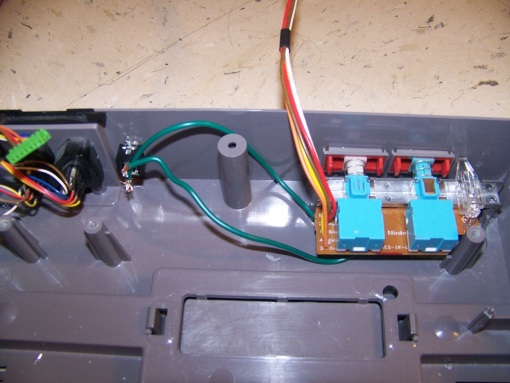

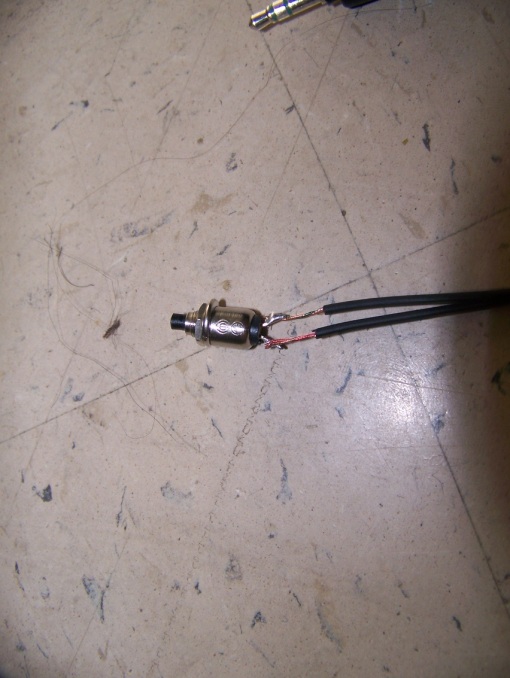

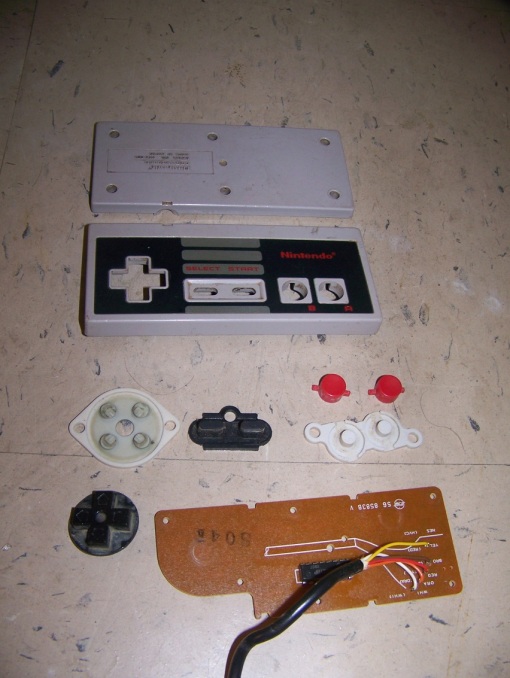

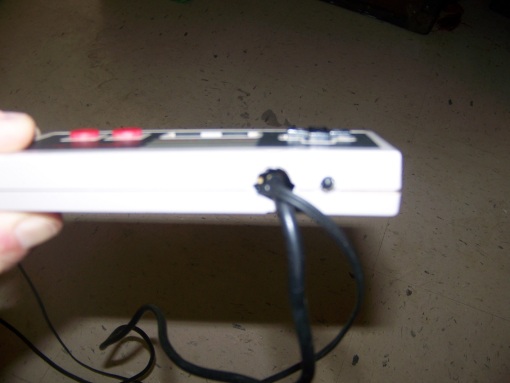
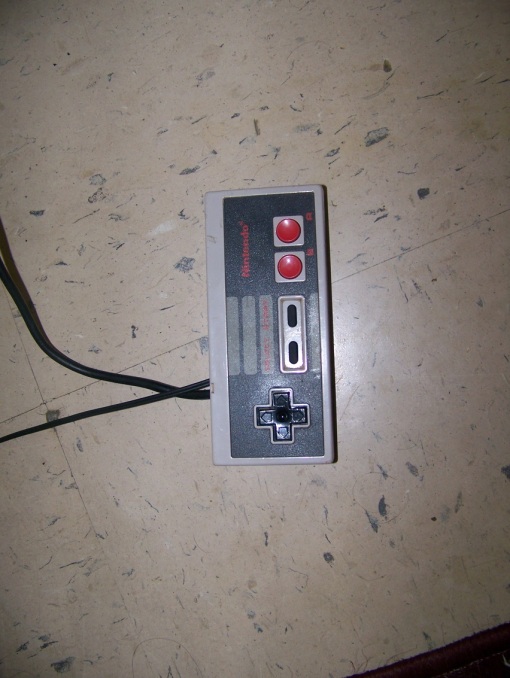
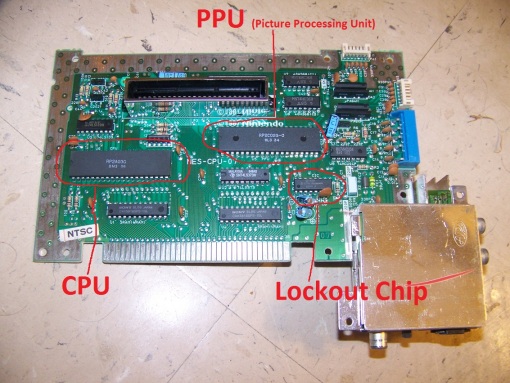

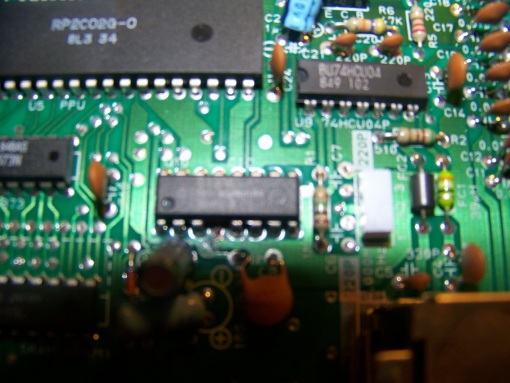

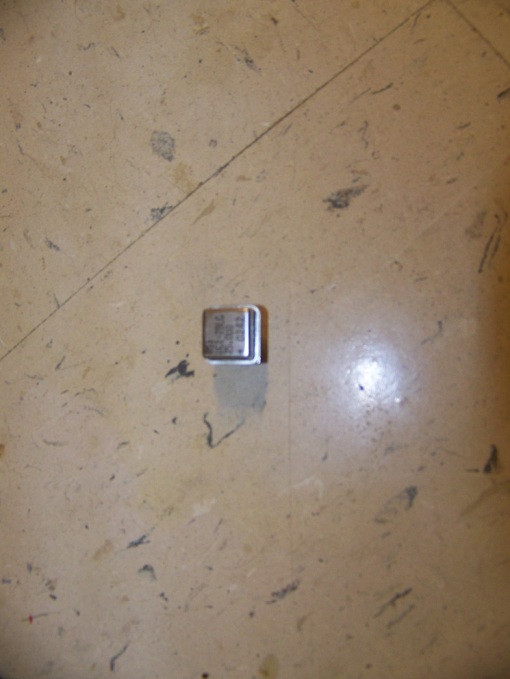

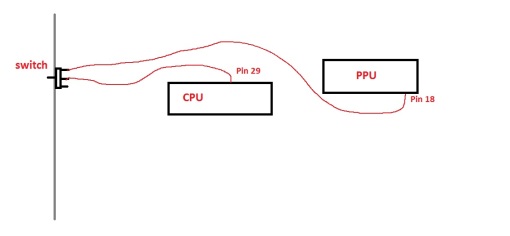

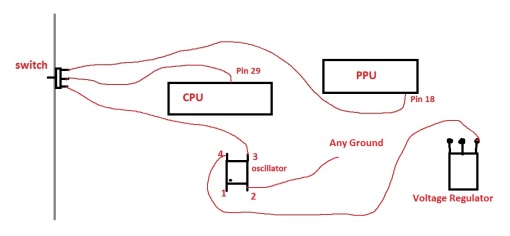

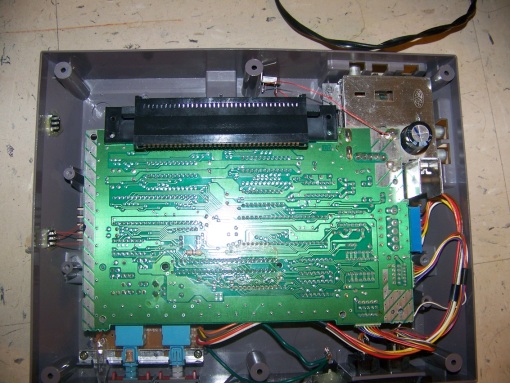

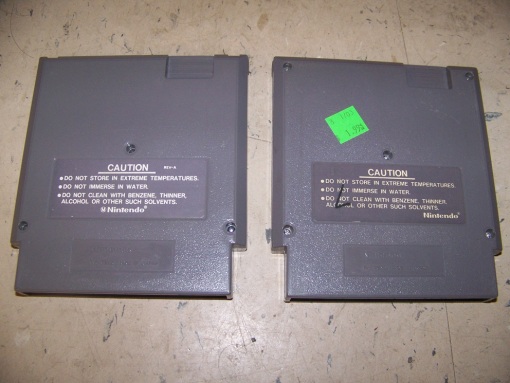

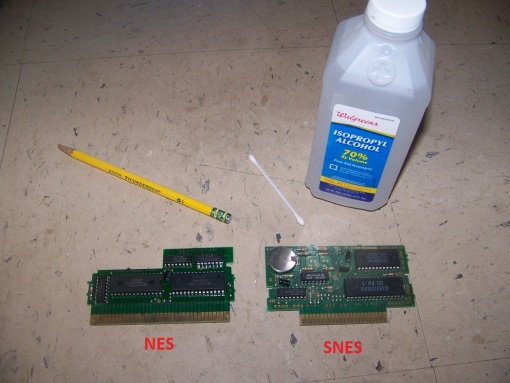
17 Comments
Great article. I stumbled upon it by looking for a tutorial on how to perform the extra sound channel mod.
Hello friends, its impressive post about teachingand completely explained, keep it up
all the time.
For the reset button mod you can easily use the pin 5 and 6 of the controller because they are not used on the original controller but only on nintendo zapper or another accessorie. view the pinout : http://www.parallax.com/Portals/0/Downloads/docs/prod/compshop/450-32360%20Pin%20Out.jpg
And sorry for my bad english.
Not bad, but there is one huge edit you might want to make: the NES runs off of a 120v AC source, meaning no conversion to DC takes place. A Genesis AC adapter converts the same 120v source in to 9v DC current and then feeds it to a LM7805 voltage regulator, which gives the Genesis 5v of DC voltage to use (and a lot of heat as a byproduct; the 7805 is terribly inefficient).
Using a Genesis adapter on a NES or. NES adapter on a Genesis WILL cause irreversable damage to your system(s). Just thought you’d want to know before something bad happens.
Although using an NES adapter on a Sega Genesis will most likely cause damage my research almost unilaterally has been that a Genesis adapter will work fine with an NES
http://www.sega-16.com/forum/archive/index.php/t-11051.html
http://www.digitpress.com/forum/showthread.php?160257-Genesis-AC-adapter-with-the-NES
http://neogaf.com/forum/showthread.php?t=504658
among several other online references I’ve found.
Good article! I appreciate the effort. Especially the LED specs. I would definitely brush up on grammar and basic english skills. Especially: To v Too, Your v You’re, Their/There/They’re, Defiantly v Definitely, etc etc.
also to reply to my reply. its sometimes difficult to interpret text without body language or vocal clues behind it. therefore its hard to determine if your sincerely just trying to be helpful and improve my writing or just being a nitpicking douche thus I think my initial reply was a reactive shock and awe sarcasm retaliation. I will attempt to improve my writing. this NES article was an earlier one of mine and I would like to think that my newer ones do include improved grammer and spelling (I have mostly stamped out my bad habit of making alot one word) That said, yes. I’m not the best at grammer but I do believe that in the end writing and speaking is a form of communication to transmit ideas and as long as the idea and information is transferred (which I believe anyone can understand here despite to vs too and there vs their) grammer is a formality. Text speak is not the end of western civilization, though you won’t catch me doing it).
okay, back on topic….
Hi, regarding the overclocking of the NES, you mentioned in future you would use a oscillator of 36mhz, as i can’t seem to find any of that frequency, would a 32mhz oscillator 5v do the trick?, thanks in advance…
There seem to be plenty of 36mhz oscillators on Ebay. If you do not have a access to Ebay or simply want to find one locally A 32mhz oscillator should work fine. you will get a speed of 2.66mhz which is a fine OC. Its fast enough where you will definitely see a difference but probably not to fast where it will glitch a game or make it unplayable.
Thank you for your reply and advice very much appreciated
This post is like a bible for me…I’ve found all that I needed to know about NES. Thanks! 🙂
I’m glad its helped you out and that you enjoyed it.
A lot!
I have pal region nintendo console, would the board still be same inside and would it be same pin removal for region lock out mod???
I would check some forums and do some searches as I can’t confirm that. I want to say it’s the same but I only have experience with NTSC NES units so…..
If your ever in perth WA , sing me an email I pay you to mid my nes
In the sound mod, you say to use a 47k resistor (Yellow Violet Orange Gold) but in the picture it’s a 47 (yellow violet black gold) resistor.
Is it 47 ohms or 47k ohms?